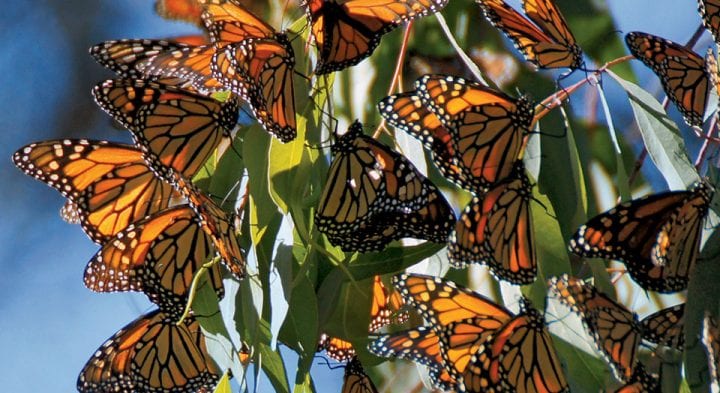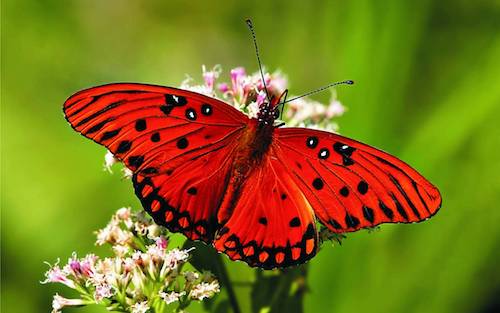
WITS Voices: When A Child Dies
May 7, 2019
By Ann Teplick, WITS Writer-in-Residence
For the past eight years, I have been a teaching artist at Seattle Children’s Hospital. I have witnessed love, empathy, laughter, celebrations and grief on a profound scale. I have contemplated the complexities of loss and have asked myself how can one possibly continue when a child dies?
Each year, I have written with students who pass away. Whether we have worked together for years, or months, a few sessions, or one—I liken the initial impact of their passing to a tempest that hurls me to my knees. And when I finally regain my footing, there it is again.
I know in this life, there is no terra firma. I know that impermanence and being present in the moment are the only things that are solid. Rabindranath Tagore said, “The butterfly counts not months but moments, and has time enough.”

For years, each time my meditation teachers had suggested we “sit with” our pain, rather than cling to it or push it away, I wanted to do something un-Buddha like. Like scream, or crack a few jokes, or belt out the lyrics of a Jim Morrison song, where torment seeps like a bruised and mucked-up fruit. Shake the silence of the room. It’s taken me a long, long time to wrap my head around this concept. And a long time to trust that in hard times, even though I will be knocked to my knees, I will find a way to pick myself up.
The effort is constant, though, and began with an insight on a foggy beach, where a boat horn blared, and a heron strolled through the foam of a wave. On a wet-salted rock, I perched, crying, trying to “hold” the unholdable—an indelible personal pain—like fire, like I had been blowtorched. When, out of nowhere, a barrage of butterflies lit upon me—two on my thumb, one on my knee, one on my shoulder, the zipper of my green fleece jacket. Who knows how many on my hood. They were brownish-yellow and the size of my fist, with wings, veined and coppery, that closed and opened in slow motion.

Now, when I hear that a student I’ve written with has passed away, I open the doors and windows and usher the tempest in.
And as I pull myself together, I imagine I am a butterfly—a Lupine Blue that counts the moments, and has enough time to do so.
And I think about grief—its wisdom and mystery—and how sometimes, it appears when we least expect it, when we don’t want it to mess with our already-fissured hearts.
Which brings me to Stuart Kestenbaum’s poem, “Grief Arrives in its Own Time” –
It doesn’t announce itself or knock
on the door of your heart. Suddenly
it’s right behind you,
looking with great pity
at the back of your neck
and your shoulders on which
it spends days placing a burden
and lifting it. Grief arrives
in its own sweet time, sweet
because it lets you know that
you are alive, time because
what you are holding becomes
the only day there is: the sun stops
moving, the sky grows utterly quiet
and impossibly blue. Behind the blue
are the stars we can’t see and beyond
the stars either dark or light,
both of which are endless.
I delight in remembering all of the students I’ve written with these last eight years at Seattle Children’s hospital. I imagine them butterflies, too—Monarchs and Tortoiseshells. Glasswings and Fiery Skippers. Here are some of the poems of three students who have passed away since last summer. I can only imagine the grief of the families and friends of these children. This is when the heart cracks open and sails its boatloads of love. I am grateful to have known these young poets, even for a split millisecond of their lives. Their work is part of their legacy of strength, resilience, courage, and beauty.

ME AND LIFE MEETING AGAIN
I am as curious as a lab puppy.
Creative, as a mind with six arms.
Smart, like a fire burning in a fireplace.
Young, as a baby dove.
As friendly as a paintbrush with its sea-blue paint
Meeting paper for the first time.
I am as happy as a warm sun
Beating down on a sandy beach
On the elegant soft sand.
HAPPY ELEPHANTS
are intellectual elephants
That ride in racecars with backpacks
Full of toy racecars, two quarters high.
And cotton candy,
As blue as blueberry pie
In the sky.
And bobbleheads,
Fake brother hummingbirds
As smart as Einstein,
And tough greasy stroking peas.
They are on their way
To their house in Bellevue
To pick up their brother Jordan,
And head to the Olive Garden
Where they chop lettuce
And make curly fries
And butter the bread
While the customers wait.
They get home at 8:00 p.m.
Get ready for bed
In their elephant PJs
Filled with super elephants
In red capes.
And
Then
They
Fall
Asleep.
WHAT THE WORLD SHOULD BE
I would like to live in a world with peace and no war.
In a world with advanced technology.
What if the world had a cure for every type of cancer?
I wish the world could go by the golden rules.
If only the world knew no weapons.
I hope the world, in the future, will have more Italian food.
I wish that the earth would rain diamonds.
I hope that in the future all people will not have financial struggles.
I wish that in the future, companies will be honest to their customers.
I believe the world can be kinder to one another.
What if all people in the world could have sympathy for each other?
What if the people of the world could travel in spaceships
To other solar systems in our galaxy?
I hope the world will keep exploring our solar system, our galaxy,
And forever expanding our universe.
WHY KINDNESS IS BETTER
Kindness smells like a pizzeria in Italy cooking pasta
Over their stove and cooking a delicious Margarita pizza
In their wood-fire oven.
Rudeness smells like the inside of a garbage truck.
Kindness sounds like the soothing purr of a cat.
Rudeness sounds like a huge tsunami traveling
At very high speeds.
Kindness tastes like chocolate gelato on a hot summer day.
Rudeness tastes like a rotten tomato buried underground
For four years, stomped on by thousands and thousands
Of muddy shoes.
Kindness feels like a soft squishy pillow you can hug all day.
Rudeness feels like 176,000 black widow spiders
Hatching and crawling up your arm.
Kindness looks like Walt Disney World and Universal Studios combined.
Rudeness looks like a nearly invisible black hole revealing itself
As it’s sucking up a nearby star.
KNITTING
When I first learned to knit,
My mom taught me
And I thought it was so cool.
Fabric coming off the end of the needle.
A comforting feeling
Rises in me.
At the hospital,
Lying in bed
Unable to read or walk,
Knitting
Calmed me down,
One of the only things I could do.
KNITTING NEEDLES
The knitting needles that flash by
The knitting needles that click and tap
The knitting needles that create fabric
The knitting needles covered in yarn
The knitting needles made of wood
The knitting needles that make mistakes
The knitting needles with dents in them
The knitting needles that comfort me
COURAGE
I am courage.
I have stars all over.
They are bright and magical.
I sleep on the moon.
I love jumping on trampolines
Because it is freedom—
Jumping up and down in the cool air
Which smells like fresh grass.
I would like others to keep on trying
To move to the next step.
I am courage.
WHAT WOULD COURAGE BE?
If courage were a color,
It would be pink like a flamingo.
With the sound of a hummingbird.
With the scent of pure vanilla ice-cream.
With the taste of a lemon popsicle.
With a texture as soft
As a red, green, and blue parrot.


Ann Teplick is a poet, playwright, and prose writer with an MFA in creative writing from Vermont College of Fine Arts. For twenty-three years, she’s been a teaching artist in Seattle public schools; Hugo House; Coyote Central; and Pongo Teen Writing, at King Co. juvenile detention and the Washington State psychiatric hospital. She has received funding from Seattle Office of Arts and Culture, 4 Culture, Artist Trust, and the Society of Children’s Book Writers and Illustrators. She is also a Hedgebrook and Jack Straw alumna.